Images
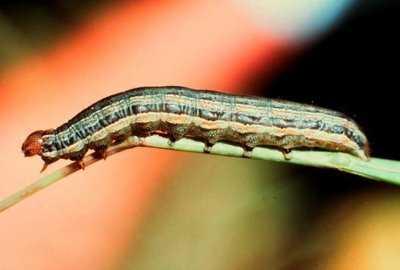
© University of Arkansas
|
African armyworm. Mature larvae measure up to 4 cm. This is the gregarious form (caterpillars growing crowded).
|

© University of Nebraska - Lincoln
|
Armyworm identification. The caterpillars can eat the entire leaves of field crops and grasses. When feeding, they chew from the leaf edges until only the midrib is left. They feed on various crops and grasses during their migration, and often bare crops of tender leaves after passing through. They travel from field to field in great numbers, hence the name "armyworm".
|

© IRRI Rice doctor
|
Lifecycle of armyworm 10 to 300 eggs are laid by an adult female moth, on the leaves. The eggs are white and become dark brown just before hatching (about 0.5 mm in diameter). Depending on temperature the eggs hatch after 2 to 5 days. Larval stage takes 14 to 22 days. Pupal stage lasts 7 to 15 days. Adult moth lifespan is 5 to 16 days. In East Africa, the lifecycle lasts about 25 days at an average temperature of 26 degree Celsius.
|
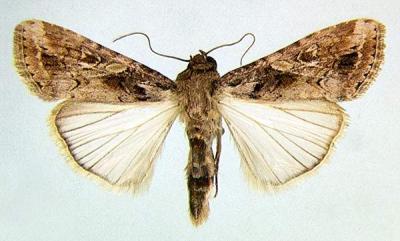
© Georg Goergen/IITA Insect Museum, Cotonou, Benin. Reproduced from the Crop Protection Compendium, 2004 Edition.
|
Armyworm, adult male moth S. exempta (museum set specimen). 1.4 to 1.8 cm long and with a wingspan of about 3 cm.
|

© Georg Goergen/IITA Insect Museum, Cotonou, Benin. Reproduced from the Crop Protection Compendium, 2004 Edition.
|
Armyworm, adult female moth (S. exempta) (museum set specimen). 1.4 to 1.8 cm long and with a wingspan of about 3 cm.
|
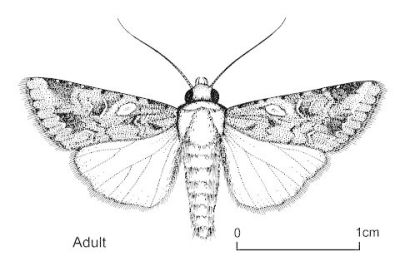
© Dennis S. Hill. Reproduced from the Crop Protection Compendium, 2004 Edition.
|
Armyworm, adult moth - line drawing. Stout-bodied moths of typical noctuid appearance, 1.4 to 1.8 cm long with a 2.9 to 3.2 cm wingspan.
|
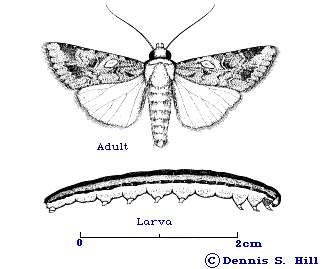
© Dennis S. Hill. Reproduced from the Crop Protection Compendium, 2004 Edition.
|
Armyworm, adult and caterpillar - line drawing. The pupa is red-brown and is approximately 2 cm long. Adults have a wingspan of about 3 cm.
|
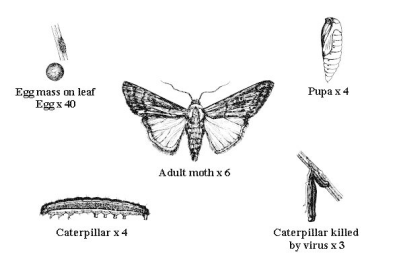
© Dennis S. Hill. Reproduced from the Crop Protection Compendium, 2004 Edition.
|
Armyworm, life stages - line drawing. Egg ca 0.5 mm diameter, conical with a slightly rounded apex. Gregarious larvae with velvety-black upper surface with pale lateral lines, green or yellow ventral surface. Pupae mahogany-brown, 10 to 14 mm long, with a smooth, shiny surface.
|
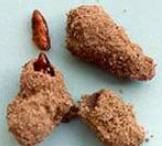
© www.larsen-twins.dk
|
Armyworm, Pupae and soil cocoons
|

 Back
Back